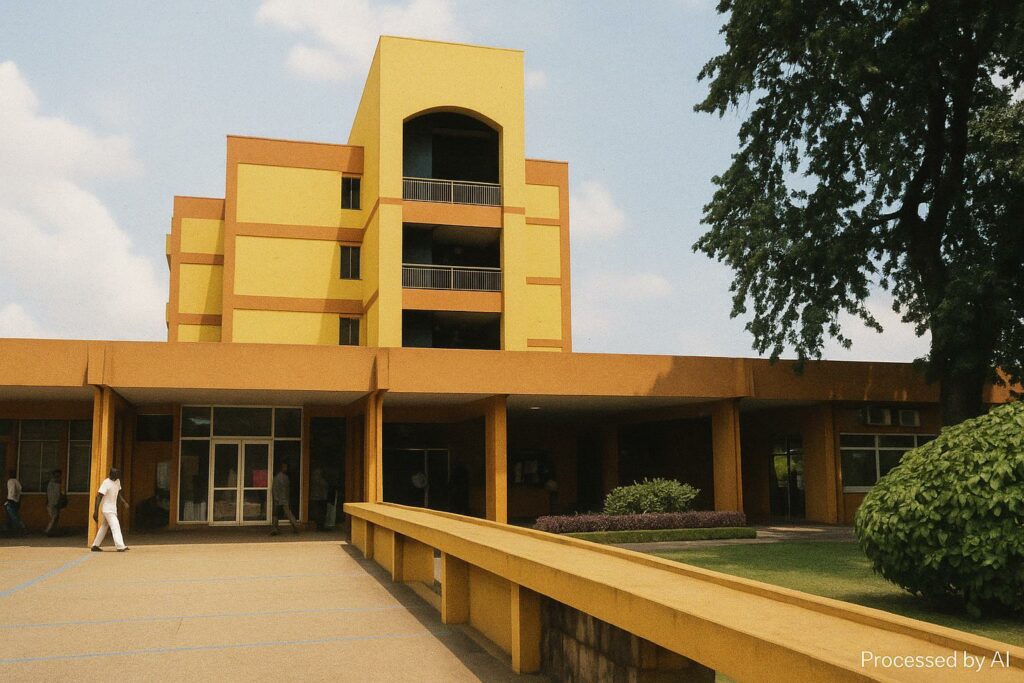A Crisis That Tested the Pulse of Congo’s Flagship Hospital
For more than a year the corridors of the Centre Hospitalier et Universitaire de Brazzaville, the largest referral facility in the Republic of Congo, echoed with more than the usual clinical alarms. Intermittent strikes, postponed surgeries and administrative gridlock had strained both morale and budgets. Matters reached a critical point on 25 July 2025, when an extraordinary general assembly of the inter-union coalition issued a twelve-point ultimatum that included, in unusually blunt terms, a seventy-two-hour demand for the resignation of Professor Thierry Raoul Alexis Gombet, the hospital’s director-general. The standoff seemed poised to paralyse a structure that handles an estimated 40 per cent of the nation’s specialised care (Ministry of Health, Brazzaville).
Enter the Departmental Directorate of Labour
Against this tense backdrop, the Departmental Directorate of Labour, led by Yves Roger Tséké-Tséké Ayongo, invoked its statutory mandate to preserve social peace within key public services. Drawing on the country’s 2017 Labour Code and the tripartite conventions ratified with the International Labour Organization, the Directorate convened a two-step mediation process from 4 to 8 August. Observers from the Ministry of Public Service and the Congolese National Social Security Fund (CNSS) attended as silent facilitators, a configuration one official described as “preventive diplomacy in a white-coat environment” (Labour Directorate communiqués, August 2025).
The Anatomy of a Compromise
The resulting memorandum, solemnly signed on 8 August in the hospital’s conference hall, seeks to reconcile professional grievances with fiscal realism. It sets a 31 August deadline for convening the 2024 advancement and social-security joint commission; reaffirms the government’s commitment to settle the June-July wage arrears; tasks a mixed committee with auditing the hospital’s debt to the CNSS; and pledges accelerated refurbishment of critical wards, including the neonatology and radiology units recently listed by the World Health Organization as priority sites (WHO Country Office, Brazzaville). Of equal importance, the pact provides for intensive training in labour law for human-resources staff and union stewards, thereby institutionalising conflict-prevention mechanisms rather than episodic firefighting.
Political Optics and Governance Implications
That the agreement emerged without public recrimination underscores a broader pattern in Congo-Brazzaville’s governance: the executive branch’s preference for technocratic conflict resolution over courtroom confrontation. In discreet briefings, diplomatic sources credit presidential envoy Firmin Ayessa with ensuring inter-ministerial financial backing—an intervention that signals the administration’s sensitivity to the symbolic weight of its flagship hospital. Far from an isolated episode, the CHU-B détente dovetails with ongoing national health reforms, notably the 2022–2026 Strategic Development Plan that prioritises workforce stabilisation and supply-chain resilience (Prime Minister’s Office reports).
Fiscal Realities and the Path Ahead
The memorandum requires approximately 3.6 billion CFA francs in immediate disbursements, a sum deemed feasible by the Ministry of Finance after oil-revenue revisions earlier this year. Yet seasoned analysts caution that structural sustainability will hinge on diversifying hospital revenue streams through public–private partnerships and enhanced billing transparency. In that respect, the reactivation of the salary-arrears monitoring commission at the Treasury, with a deliverable date of 30 October, is being watched closely by international lenders already supporting health-sector performance indicators.
A Measured Calm, but a Precarious One
For the moment, the atmosphere in Brazzaville’s largest operating theatres is noticeably calmer. Surgeons who had rationed elective procedures for fear of abrupt walkouts report fuller schedules, while patients find appointment queues shortening. The unions, for their part, have suspended all strike notices yet maintain what their spokesperson calls “constructive vigilance”. This dual dynamic—confidence laced with caution—mirrors the broader socio-economic climate of a country navigating post-pandemic recovery whilst safeguarding social cohesion.
Why the CHU-B Precedent Matters Regionally
Beyond Congo’s borders, the episode offers a case study in labour-relations management within fragile health systems. Regional observers from the Economic Community of Central African States note that the Brazzaville model combines rapid administrative arbitration with binding follow-up clauses, a template potentially replicable in comparable institutions in Libreville or Bangui. Moreover, by foregrounding sectoral expertise over political antagonism, the process enhances the credibility of state institutions at a time when confidence in public services remains an essential vector of stability across Central Africa.
Diplomacy in White Coats: An Appraisal
Ultimately, the social truce at the CHU-B illustrates how diplomatic reflexes—listening, sequencing, mutual concessions—can defuse labour emergencies even in resource-constrained contexts. Whether the memorandum endures will depend less on the ink drying beneath the signatures than on sustained budgetary discipline and the cultivation of a participatory culture among staff. For now, Brazzaville’s largest hospital has traded the drumbeat of protest for the hum of ventilators and the measured cadence of surgical instruments—a soundscape that, in public-health terms, speaks louder than any communiqué.

